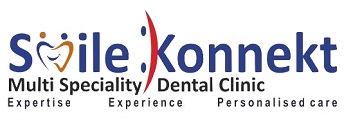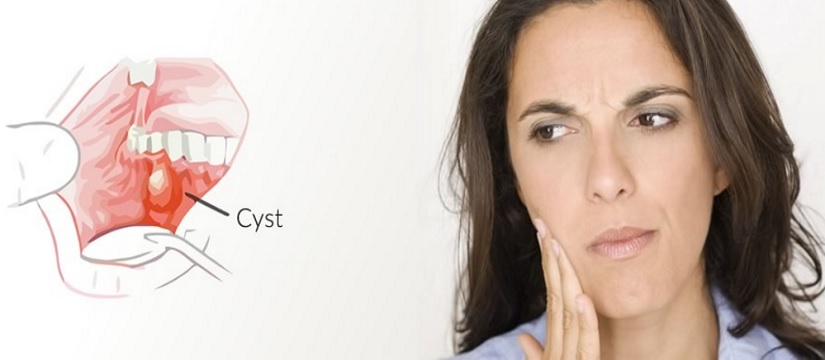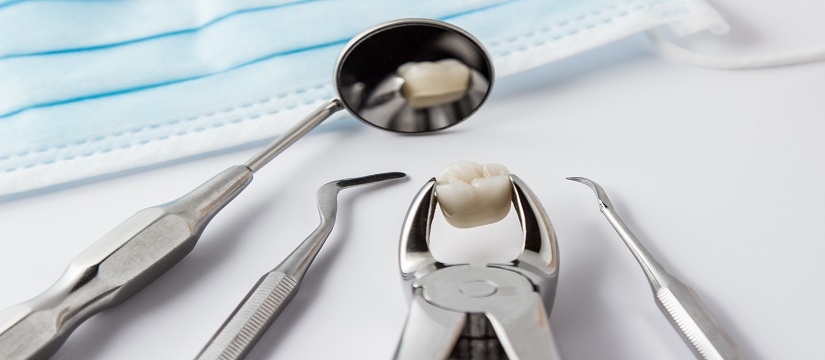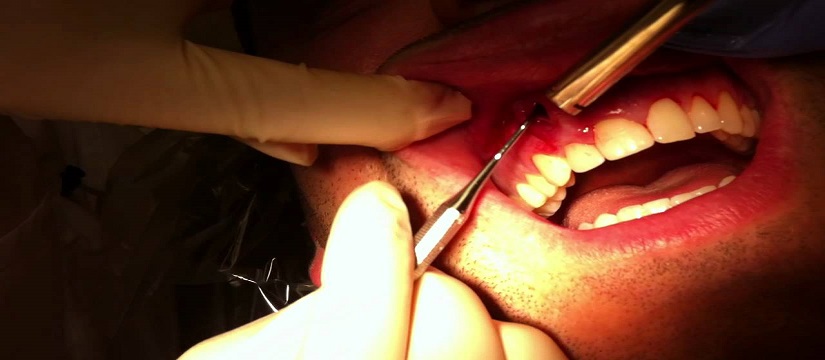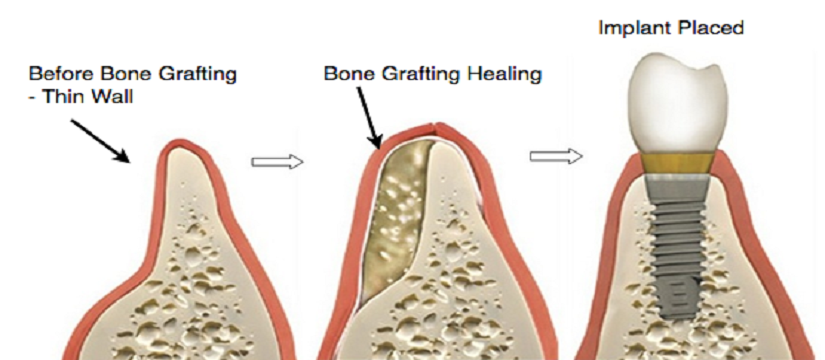Oral surgery covers a wide range of procedures from dealing with life-threatening medical emergencies to aesthetic pre-prosthetic surgical procedures.
At SmileKonnekt Dental Clinic, we carry out all of our surgical procedures in strict accordance to the principles and rules on aseptics and antiseptics – all of the armamentarium and materials that are used (including operation gloves) are sterile. This way, we give our best to minimize the risk of post-operative infectious complications that may cause discomfort to our patients.
The procedures we offer are
This is the regular type of extraction that a lot of patients have experienced in the past. The tooth is loosened and removed with a forceps.
The advantage of this extraction type is that healing is quicker.
However this method is not suited to all teeth. There must be adequate sound tooth structure to grip for this type of extraction. This extraction method is not suited to impacted teeth, badly broken down or decayed teeth or those with multiple roots in dense bone.
What is the recovery period?
This depends on the type of extraction, the number of teeth and your own particular healing! A full assessment of this can be made at your consultation. All patients receive a prescription and comprehensive written post-operative instructions following a surgical procedure. Sick certificates can be issued on request.
Typically, patients are referred to an oral surgeon for the removal of badly broken down or impacted teeth. This is because a non surgical or simple extraction is not possible, or because bone need to be preserved for future implant treatment.
This extraction method is particularly suited to impacted teeth, badly broken down or decayed teeth or those with multiple roots in dense bone. Like a wisdom tooth extraction, this is a minor surgical procedure and can be performed comfortably under local anaesthetic and/or intravenous sedation.
What is the recovery period?
This depends on the type of extraction, the number of teeth and your own particular healing! A full assessment of this can be made at your consultation. All patients receive a prescription and comprehensive written post-operative instructions following a surgical procedure. Sick certificates can be issued on request.
Steps Of Availing Third Molar Surgery At Smilekonnekt, Mukherjee Nagar, Delhi, India:
Step 1 – Consulting By Dr. Shri Krishna Kabra MDS at Smilekonnekt Dental Clinic, Delhi.
Step 2 – Check up And Taking Xray
Step 3 – When Possible Painless injection will be given and third molar surgery with advanced technique will be carried out immediately.
Step 4 – Medications and symptomatic relief will be given So minimum swelling or discomfort
An oral brush biopsy is a painless test that involves taking a small sample of tissue from your mouth and submitting it for testing. The tissue will then be sent to a lab where it will be analyzed for abnormal cells.
Alternatively, your dentist may order a scalpel biopsy. In most cases, this procedure is also done in-office; however, it typically requires local anesthesia. Any incisions may be closed using self-dissolving sutures (stitches) that don’t need to be removed.
Since oral tissues are rich in blood vessels, its completely normal for some bleeding to occur after a scalpel biopsy. Your dentist will provide any follow-up instructions, including how to manage swelling and what you can eat and drink.
Your report will arrive in a few days. In most cases, the growth will be identified as benign and the biopsy is only a precautionary measure. But in the case that the tissue is cancerous, early detection is vital as the key to preventing any disease from growing and spreading.
While most traumatic dental injuries occur in children and teenagers, people of all ages can be affected, usually as a result of sports mishaps, automobile accidents, or bad falls. If you’ve experienced a traumatic dental injury it is important to visit smilekonnekt dental clinic, Mukherjee Nagar, Delhi in order to determine any necessary treatment.
Any dental injury, even if apparently mild, requires examination by a dentist or an endodontist immediately. Sometimes, neighboring teeth suffer an additional, unnoticed injury that will only be detected by a thorough dental exam.
We offer dental treatment for all following dental injuries:-
- Chipped or Fractured Teeth
- Dislodged (Luxated) Teeth
- Knocked-Out (Avulsed) Teeth
- Root Fractures
- Traumatic Dental Injuries in Children
- Root Resorption
Bone grafting procedures may be performed separately or together with implant placement depending upon your bone status. There are several areas of the body that are suitable for attaining bone grafts.
In the jaws region, bone grafts can be taken from inside the mouth, in the area of the chin or third molar region, or in the upper jaw behind the last tooth. In more extensive situations, a greater quantity of bone can be attained from the hip or the outer aspect of the tibia at the knee.
Different Types of Bone Grafting Procedures
- Maxillary Sinus Augmentation / Lift
- Socket Preservation
- Guided Bone Regeneration / GBR (Ridge Augmentation & Jaw Reconstruction)
Surgical incision and drainage is a commonly used technique in oral surgery to treat dental infections which have progressed to oral swellings. If cavities of the teeth are left untreated, they can eventually progress to infections that spread into the jaw bones and later into the surrounding soft tissues. Not only is this process extremely painful for the individual, but it is also extremely dangerous. This is because untreated dental infections which have penetrated into the surrounding tissues can lead to a spreading of the infection to the brain or heart in a short period of time, causing severe illness and potentially death.
The first sign of a dental infection that has penetrated through the jaw bone into the surrounding soft tissues, other than pain, is a noticeable swelling of the individual’s mouth and/or face.
The way in which these types of infections are treated first begins with a complete review of the patient’s medical and dental history. It is crucial for the clinician to know the history of the current infection in order to develop an appropriate treatment plan to treat the infection.
In some situations, the tooth responsible for the infection may be salvaged. This is based on clinical assessment of the tooth and the relative prognosis for treating the infection by retaining the tooth. In most instances however, the tooth in question is often extracted in conjunction with performing the incision and drainage procedure. In this case, the extraction is performed at the same time as the surgical incision and drainage procedure.
The procedure is generally performed in an out patient setting under local anesthetic. For those individuals who are extremely apprehensive, oral and or intravenous sedation can be utilized in conjunction with the local anesthetic.
In general, once the region of the infection has been appropriately anesthetized or “frozen”, a small incision/cut is made in the gums at the most prominent point of the oral swelling. The pus (purulence) is then drained and the site is irrigated with sterile saline solution. In certain instances where a significant amount of swelling and pus are present or when the infection has been long standing, the clinician may elect to place a rubber drain to keep the surgical site patent. This allows for any residual drainage of pus to occur and prevents the need for any further surgery at this site. The drain must be removed by the clinician in 24 to 72 hours after placement. The patient is required to follow-up with the clinician on a regular basis during the healing period. The timeline for follow-up is determined by the clinician based on his/her clinical assessment of the patient.
The patients are often placed on antibiotic therapy following the surgical procedure for a period of 7 to 10 days. A prescription for pain medication is also often provided.
Surgical incision and drainage is a routinely performed procedure for locally spreading dental infections which has demonstrated excellent outcome for patients.
A dental cyst is one of the most common problems resulting in patients seeing an emergency dentist urgently, as it has the potential to cause sudden and unexpected pain in the affected area and can also spread to the jaw, gums and face.
Problems caused by dental cysts
- The dental cyst will occupy a space in the jaw and may displace or replace normal tissues and cause bone loss.
- Dental cysts may resorb (eat into) adjacent teeth or push the teeth out of their normal alignment.
- Cysts may cause expansion of the jaw bone, usually by painless expansion. That is why many patients are unaware that they have a dental cyst.
- Cysts may compress nerves and cause facial numbness.
Types of Dental Cyst
- Periapical cysts
- Dentigerous cysts
- Lateral Periodontal cysts
- Residual cyst
- Eruption cyst
